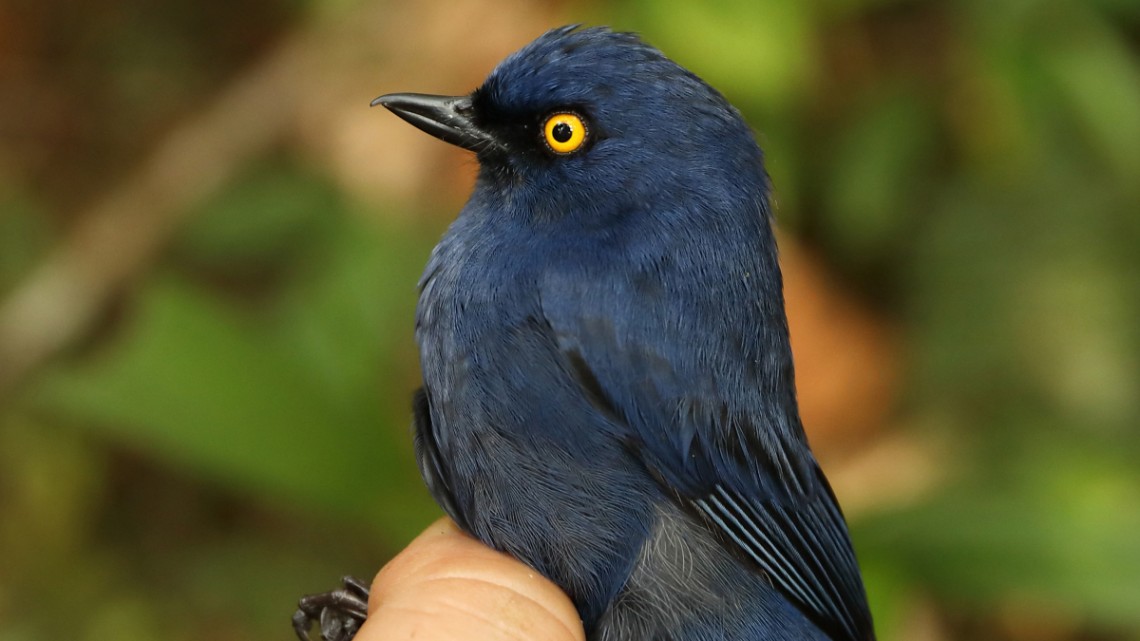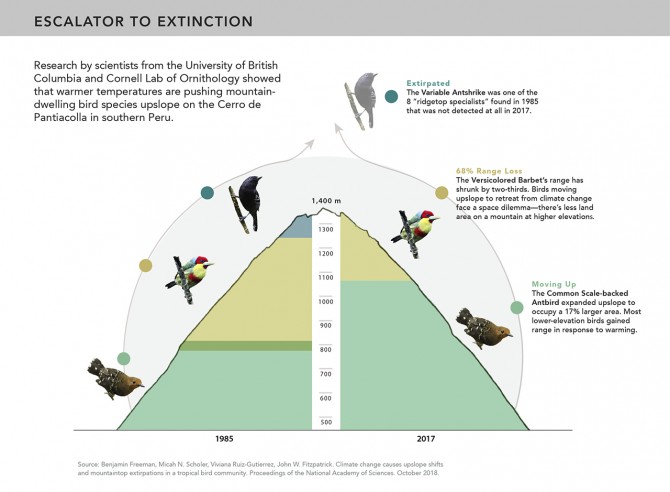
A deep-blue Flowerpiercer in the Peruvian Andes.
Survey: mountain birds on an ‘escalator to extinction’
Warmer temperatures are pushing mountain-dwelling birds ever higher as they try to stay in their comfort zone. That’s the conclusion of a group of scientists who retraced the steps of a 1985 expedition in the Peruvian Andes and documented how birds had shifted in the intervening 30 years. The new study also shows species that were already living on the ridge-top now have smaller ranges and some have disappeared altogether.
“Climate Change Causes Upslope Shifts and Mountaintop Extirpations in a Tropical Bird Community,” by Cornell Lab of Ornithology and University of British Columbia scientists, was published Oct. 25 in Proceedings of the National Academy of Sciences.
The researchers believe there is a high statistical probability that at least four species have been extirpated from the survey area, given the team’s extensive field searches and analyses of audio recordings. The missing birds are the variable antshrike, buff-browed foliage-gleaner, hazel-fronted pygmy-tyrant, and fulvous-breasted flatbill. None of these species is considered threatened but the research supports the idea that birds living at higher altitudes are moving even higher as a reaction to climate change, which can result in local extinctions.
Lab of Ornithology director John Fitzpatrick led the 1985 survey and co-authored the new report. Benjamin Freeman, Ph.D. ’16, lead author and postdoctoral fellow at the University of British Columbia, led the resurvey of Cerro de Pantiacolla, a 4,640-foot ridge in southern Peru, covering the same ground and employing the same methods used in 1985.
“Mountaintop species are running out of mountain,” said Freeman. “The next step is extinction. Of the 16 mountaintop species found in the last survey, eight are missing from our new survey.” Freeman said annual average temperatures in the region have increased by around 1 degree Fahrenheit since 1985, and more than two-thirds of the species studied in the research have shifted their ranges upslope an average of 131 feet to survive.
“This is the first field-work evidence to show that some local bird populations were literally wiped out by upslope shifting,” said Fitzpatrick. “We think this pattern is probably being repeated on tropical mountain slopes all over the world.”
With Earth’s average temperatures predicted to warm as much as 3 degrees Fahrenheit more by 2100, tropical species can be expected to shift upslope by another 1,640 to 2,953 feet.
The work in Peru follows up a study Freeman did four years ago in New Guinea that found 70 percent of bird species on a mountain there had shifted their ranges upslope in an attempt to keep pace with climate change. Freeman’s research in Asia and South America shows that mountain birds in the tropics worldwide are on an escalator to extinction.
“Tropical mountains harbor thousands of bird species, more than any other terrestrial environment on Earth,” Freeman said. “Minimizing the effects of climate change on these birds means preserving and restoring forested wildlife corridors at all elevations. Otherwise, we’ll continue to lose mountain species at this very rapid rate.”
Media Contact
Get Cornell news delivered right to your inbox.
Subscribe

